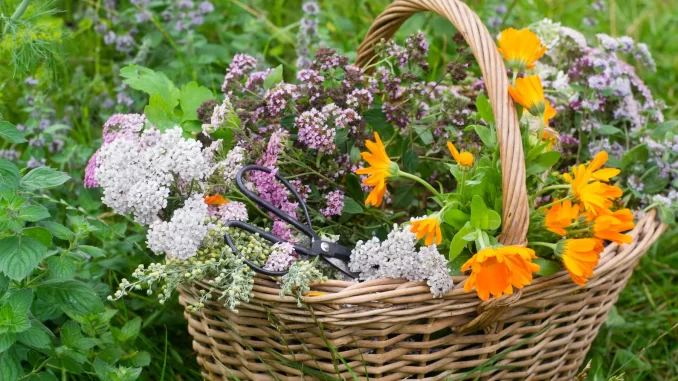
In a world where the demand for organic and sustainable living is on the rise, the spotlight is increasingly turning to the vibrant realm of organic herbal blossoms, like lavender, hibiscus, and CBD flowers. These blossoms not only add a burst of colour to gardens and landscapes but also offer a myriad of scents and flavours that go beyond the conventional greenery associated with organic produce. Let’s delve into the diverse world of organic herbal blossoms, exploring their hues, scents, and the unique experiences they bring to the table.
The Kaleidoscope of Colours
One of the most enchanting aspects of organic herbal blossoms is the kaleidoscope of colours they bring to gardens and kitchens alike. From the fiery red of hibiscus petals to the calming blue of lavender clusters, these blossoms paint a vivid picture of nature’s artistry.
Hibiscus Elegance
Hibiscus, with its radiant red petals, is not only a feast for the eyes but also a treat for the taste buds. Often used in herbal teas, hibiscus adds a tangy note and a burst of colour to beverages. Beyond its ornamental appeal, hibiscus embodies the fusion of aesthetics and flavour in the world of organic herbal blossoms.
Lavender Bliss
Lavender, with its delicate purple blooms, is a symbol of tranquillity. The calming fragrance of lavender blossoms has made it a popular choice for essential oils, sachets, and culinary creations. The subtle yet distinctive hue of lavender adds a touch of elegance to both gardens and kitchens, creating a sensory experience that goes beyond sight.
The Symphony of Scents
While the colours of organic herbal blossoms are a visual treat, their scents contribute a symphony of fragrances that elevate the overall experience. Each blossom carries a unique aroma, turning gardens into aromatic havens and culinary experiments into olfactory adventures.
Roses in Full Bloom
Beyond their association with romance, roses bring a rich and diverse fragrance profile to the world of organic herbal blossoms. From the sweet notes of a classic red rose to the citrusy hints in a pink rose, these blossoms open a world of possibilities for perfumers and chefs alike. Roses not only captivate the eyes but also enchant the senses with their timeless scents.
Minty Freshness
Mint blossoms, often overshadowed by the popularity of the leaves, contribute a refreshing and invigorating scent to the organic bouquet. The aroma of mint blossoms is a testament to the herb’s versatility, whether used in teas, desserts, or as a garnish for savoury dishes. Minty freshness takes on a new dimension when experienced through the blossoms rather than just the leaves.
Culinary Explorations with Blossoms
The journey into the world of organic herbal blossoms extends beyond aesthetics and scents; it delves into the realm of culinary delights. Incorporating these blossoms into recipes adds a layer of sophistication and an unexpected twist to familiar dishes.
Edible Flowers: A Feast for the Palate
Nasturtium, pansies, and violets are just a few examples of edible flowers that grace the culinary world with their presence. Beyond their visual appeal, these blossoms bring unique flavours, ranging from peppery to subtly sweet, enhancing salads, desserts, and even main courses. Exploring the culinary potential of organic herbal blossoms opens up a palette of tastes that goes beyond the ordinary.
In the pursuit of organic and sustainable living, the world of herbal blossoms emerges as a treasure trove of colours, scents, and culinary possibilities. From the vibrant reds of hibiscus to the calming purples of lavender, these blossoms go beyond the greenery associated with organic produce. Their diverse hues and fragrances contribute to a sensory journey that extends from gardens to kitchens, turning every encounter into a multisensory experience.
As we embrace the varied hues and scents of organic herbal blossoms, we not only add vibrancy to our surroundings but also elevate our connection with nature and the culinary arts.

Leave a Reply